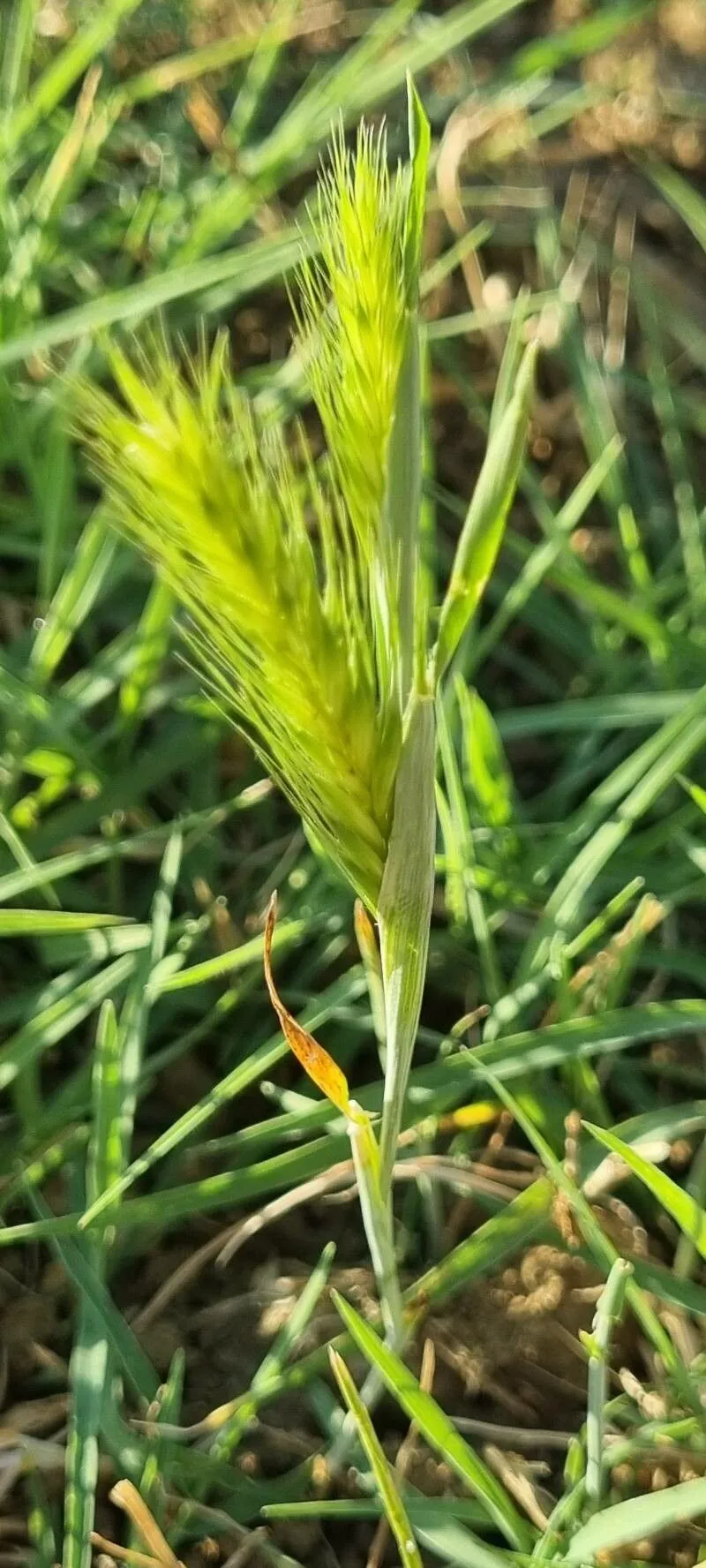
Author: Nutt.
Bibliography: Gen. N. Amer. Pl. 1: 87 (1818)
Year: 1818
Status: accepted
Rank: species
Genus: Hordeum
Vegetable: False
Observations: W. Canada to N. Mexico, Bermuda, Argentina
Little barley, scientifically known as Hordeum pusillum, is a fascinating and resilient plant species belonging to the Poaceae family, embracing a wide geographical range that extends from Western Canada to Northern Mexico, Bermuda, and even reaching as far as Argentina. Its presence across these diverse regions highlights its adaptability to various climatic conditions and its importance in numerous ecosystems.
Discovered and described by the renowned botanist Nuttall in 1818, Little barley has since piqued the interest of botanists and plant enthusiasts alike. Its historical citation can be traced back to Nuttall’s foundational work in General North American Plants, underscoring its longstanding recognition in the botanical community.
Little barley is typically found in open fields, roadsides, and disturbed ground areas where it thrives despite often being overlooked compared to other grasses. It is an annual plant, meaning it completes its entire life cycle—from germination to the production of seeds—within one growing season. This lifecycle demonstrates its quick adaptation to changing environments.
The plant’s slender, erect stature, usually growing to a moderate height, allows it to coexist with a variety of other flora without overwhelming the local vegetation. Little barley possesses narrow, elongated leaves that contribute to its graceful appearance. Its flowering heads often exhibit a characteristic barley-like structure, which adds to its agricultural relevance and aesthetic appeal.
Ecologically, Little barley plays a significant role in stabilizing soil and preventing erosion, especially in areas where ground cover might be sparse. Its roots help consolidate the soil structure, reducing the loss of topsoil and enhancing the resilience of the land against environmental stresses.
Moreover, this species is recognized for its contributions to wildlife habitats. It offers forage for various animals, particularly birds, which feed on its seeds. As part of the broader Poaceae family, it shares a close relation with other economically significant grasses, positioning it as an interesting subject for agricultural and environmental studies.
In summary, Little barley, or Hordeum pusillum, is more than just a common grass. It is a plant that underscores the intricate beauty and adaptability of nature. From its historical documentation in the early 19th century to its widespread presence across the Americas and beyond, this plant continues to be a vital part of our ecological tapestry.
Eng: little barley, little wild barley
Swe: dvärgkorn
Fra: orge naine
Cym: haidd bach
En: Little barley, Little wild barley
Fr: Orge naine
Sv: Dvärgkorn
Cy: Haidd Bach
Taken Jul 31, 2022 by Dario Rothauer (cc-by-sa)
Taken Jun 5, 2021 by Frank Hübner (cc-by-sa)
Taken Jun 7, 2019 by Wiewiora Claudia (cc-by-sa)
Taken Jan 1, 1900 by EOL − USDA NRCS Wetland Science Institute. (public)
Taken May 19, 2019 by mauriziocoriolano (cc-by-sa)
© copyright of the Board of Trustees of the Royal Botanic Gardens, Kew.
© copyright of the Board of Trustees of the Royal Botanic Gardens, Kew.
Taken Apr 17, 2020 by Kendra RaiderNature (cc-by-sa)
Taken Apr 17, 2020 by Kendra RaiderNature (cc-by-sa)
Taken Jul 6, 2020 by Antigone12 (cc-by-sa)
Taken May 19, 2019 by mauriziocoriolano (cc-by-sa)
Taken Jan 1, 1900 by EOL − John Hilty (cc-by-nc)
Taken Jun 11, 2022 by doune34160 (cc-by-sa)
Taken Apr 11, 2016 by EOL − Nina (cc-by-nc)
Taken May 12, 2014 by EOL − Sam Kieschnick (cc-by-nc)
Taken May 26, 2015 by EOL − Jim Varnum (cc-by-nc)
Taken Apr 17, 2020 by Kendra RaiderNature (cc-by-sa)
Taken Apr 28, 2022 by Robert Holbrook (cc-by-sa)
Taken Jun 12, 2021 by Juliana James (cc-by-sa)
Taken Jan 1, 1900 by EOL − John Hilty (cc-by-nc)
Taken Jan 1, 1900 by EOL − John Hilty (cc-by-nc)
Taken Apr 17, 2020 by Kendra RaiderNature (cc-by-sa)
Taken May 12, 2020 by Kendra RaiderNature (cc-by-sa)
Taken Apr 17, 2020 by Kendra RaiderNature (cc-by-sa)
Growth form>: Bunch
Growth habit>: Graminoid
Growth rate>: Rapid
Ph maximum: 8.0
Ph minimum: 6.2
Family: Myrtaceae Author: (F.Muell.) K.D.Hill & L.A.S.Johnson Bibliography: Telopea 6: 402 (1995) Year: 1995 Status:…
Family: Rubiaceae Author: Pierre ex A.Froehner Bibliography: Notizbl. Bot. Gart. Berlin-Dahlem 1: 237 (1897) Year:…
Family: Sapindaceae Author: Koidz. Bibliography: J. Coll. Sci. Imp. Univ. Tokyo 32(1): 38 (1911) Year:…
Family: Asteraceae Author: A.Gray Bibliography: Pacif. Railr. Rep.: 107 (1857) Year: 1857 Status: accepted Rank:…
Family: Fabaceae Author: Medik. Bibliography: Vorles. Churpfälz. Phys.-Ökon. Ges. 2: 398 (1787) Year: 1787 Status:…
Family: Aspleniaceae Author: (Cav.) Alston Bibliography: Bull. Misc. Inform. Kew 1932: 309 (1932) Year: 1932…